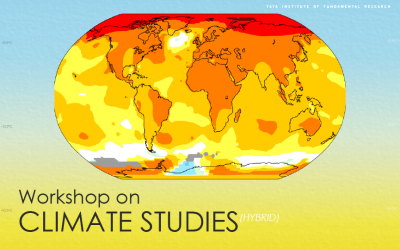Lecture 1: March 1, 2022 at 09:30 hrs
Title: How stable is the earth’s climate?
Abstract: The earth’s climate has undergone many fluctuations from decadal to million-year timescales. The present concern is regarding the impact of human actions on the earth’s climate. Can human actions lead to tipping the earth into a new warmer climate state? To understand the various modes of climate variability, it is important to look at the past climate variations from proxy data. The proxy data reveal that earth’s climate was quite stable for about 10,000 years before the advent of the industrial civilization. The earth’s climate showed dramatic fluctuations when it emerged from the last glacial age to the present interglacial on account of rapid changes in oceanic thermohaline circulation. An understanding of the factors that caused these fluctuations is necessary (but not sufficient) to predict how climate will change in the 21 st century in response to human actions. The rate of increase of carbon dioxide and temperature in the latter part of the 20 th century and early 21 st century is more than ten times higher than what has been observed during the past million years. Hence one must be prepared for abrupt changes in the earth’s climate.
Lecture 2: March 3, 2022 at 11:30 hrs
Title: Monsoons: past, present and future
Abstract: Monsoons play an important role in the variability of the climate in the tropics. Monsoon rainfall fluctuates on many time scales ranging from weeks, seasonal , interannual , interdecadal to centennial. Will these modes of variability change on account of global warming? The data from rain gauges cannot be used to examine changes in monsoon on a centennial scale. We can use proxy data from ice core, ocean sediments and caves to derive the variation in rainfall during the past 100,000 years. These data reveal how changes in solar radiation, water vapor carbon dioxide and sea ice cover influenced the variability of monsoons on many time scales. The data show that Halley’s land-sea contrast theory of monsoon proposed in 1686 is wrong. A new paradigm based on energy and moisture budget highlights the role of water vapor and the net radiation at the top of the atmosphere in regulating monsoon rainfall. Coupled ocean-atmosphere models are able to simulate these changes and hence can be used to unravel the mechanism governing changes in monsoon on long time scales. This will help us to predict how monsoon rainfall will evolve in the next hundred years.
These lectures are part of Workshop on Climate Studies (HYBRID)


